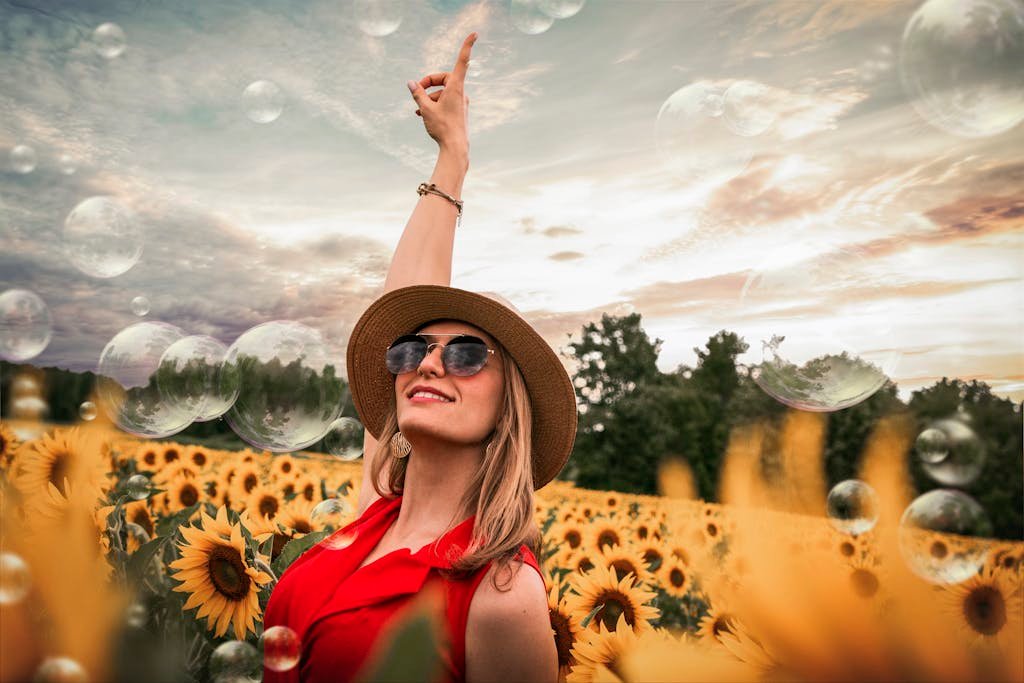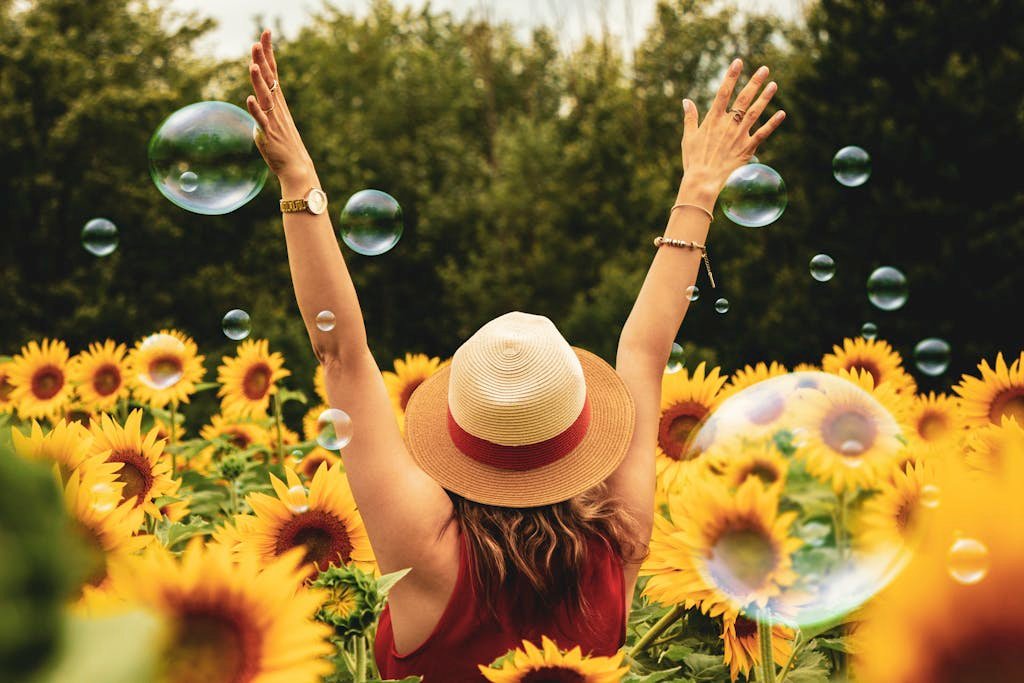Blue Mountains, Jamaica [2025]: Everything You Need to Know
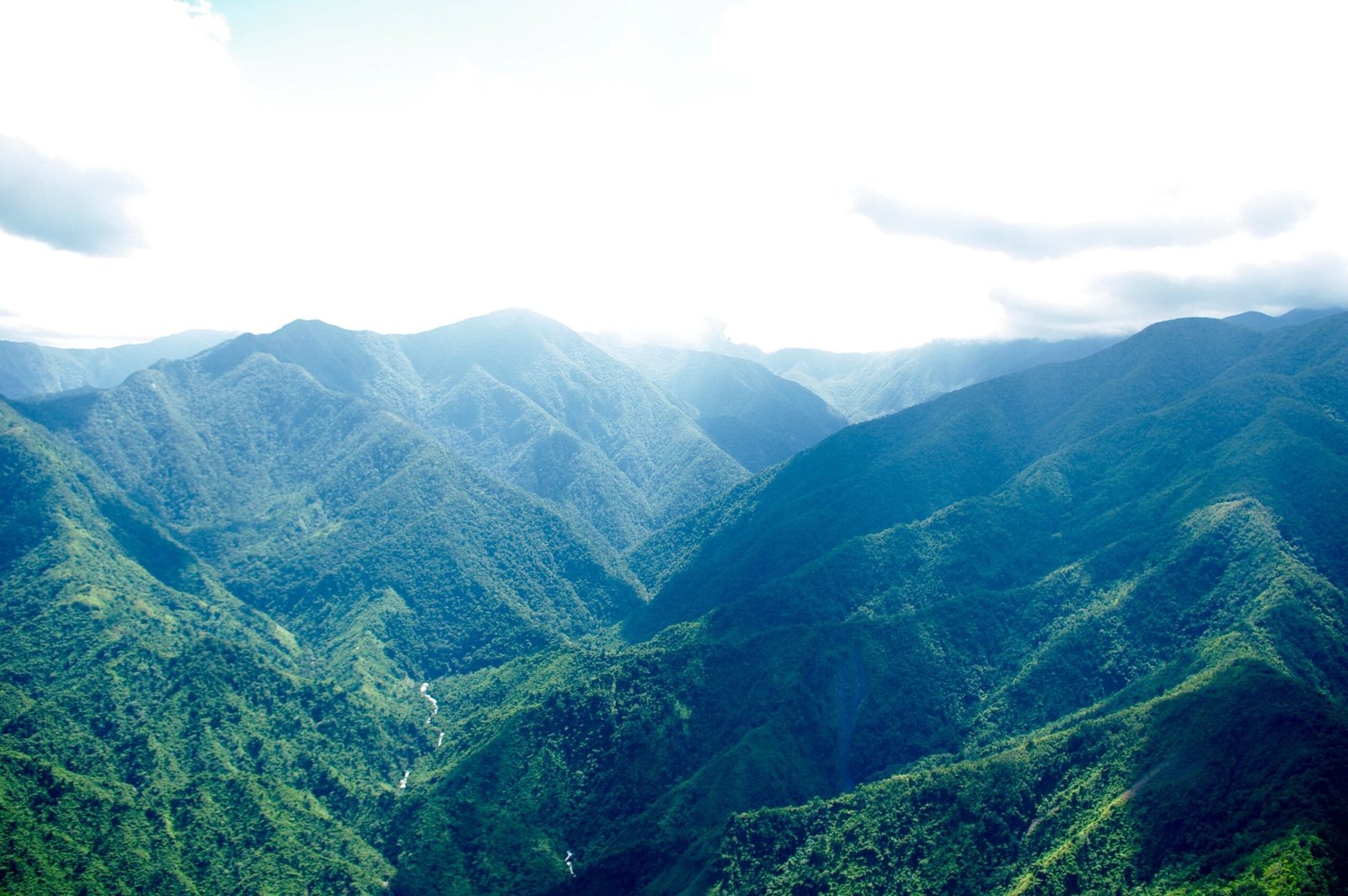
The Blue Mountains in Jamaica is a natural wonder, where misty peaks rise above lush green forests, offering breathtaking views and a cool, refreshing atmosphere.
This isn’t just a mountain range—it’s a place where adventure and tranquility meet, providing a peaceful escape from the tropical heat below.
Here, it’s all about connecting with nature and experiencing the beauty of Jamaica’s highest point.
Whether you’re hiking through its scenic trails, discovering the secrets of Blue Mountain Coffee, or simply soaking in the serene surroundings, the Blue Mountains are a place that will leave you in awe.
To check rates and availability for the Blue Mountains tours, click here.
Getting to Blue Mountains, Jamaica
The Blue Mountains are located in eastern Jamaica, stretching across the parishes of Portland, St. Thomas, St. Mary, and St. Andrew.
How To Get There
- From Kingston, the Blue Mountains are easily accessible, about a 1.5-hour drive through scenic countryside roads.
- From Port Antonio, it’s roughly a 2-hour drive, offering breathtaking views of the coastline and mountain ranges along the way.
- From Montego Bay, the journey takes about 4 hours by car, making it a longer but rewarding drive through Jamaica’s diverse landscapes.
- From Ocho Rios, it’s around a 3-hour drive, perfect for a day trip to explore the majestic Blue Mountains.
- From Negril, the Blue Mountains are about a 5-hour drive, taking you through some of Jamaica’s most scenic routes.
Guided Tours:
Guided tours to the Blue Mountains are a popular and convenient way to experience the area. Many tours offer round-trip transportation from major cities like Kingston, Ocho Rios, and Montego Bay. These tours typically include hotel pick-up and drop-off, with stops at coffee plantations and scenic points along the way. This option allows visitors to relax while knowledgeable guides provide insights into the history, culture, and natural beauty of the mountains.
Shuttle Services:
Some hotels in Kingston and nearby areas offer shuttle services to the Blue Mountains for day trips or multi-day excursions. Shuttle services provide a convenient and hassle-free option for visitors who prefer not to drive. This can include stops at attractions such as coffee estates, waterfalls, and local trails.
Rental Car:
For those who enjoy a flexible schedule, renting a car is another great way to explore the Blue Mountains. Driving offers the freedom to explore at your own pace and make stops along the scenic routes. However, it’s important to note that roads leading to the Blue Mountains are narrow and winding, so drivers should be comfortable with mountainous terrain and local traffic conditions.
Best Time to Visit Blue Mountains in Jamaica

The climate in the Blue Mountains is generally cooler than the rest of Jamaica due to its high elevation. Temperatures can drop significantly, especially at night, making it a refreshing escape from the tropical heat at sea level.
The best time to visit the Blue Mountains is during the dry season, from December to April, when the skies are clearer, offering stunning panoramic views from the peak. This period also provides more pleasant hiking conditions, with less mud and better visibility, making it ideal for early morning hikes to catch the sunrise.
During these months, you’ll also experience the blooming of many plant species, making the trails even more scenic. The cooler temperatures and lush vegetation enhance the beauty of the region, making it a perfect time for birdwatching and nature walks.
Hiking during the rainy season, from May to November, can be challenging due to muddy trails and limited visibility.
Things To Do At Blue Mountains, Jamaica
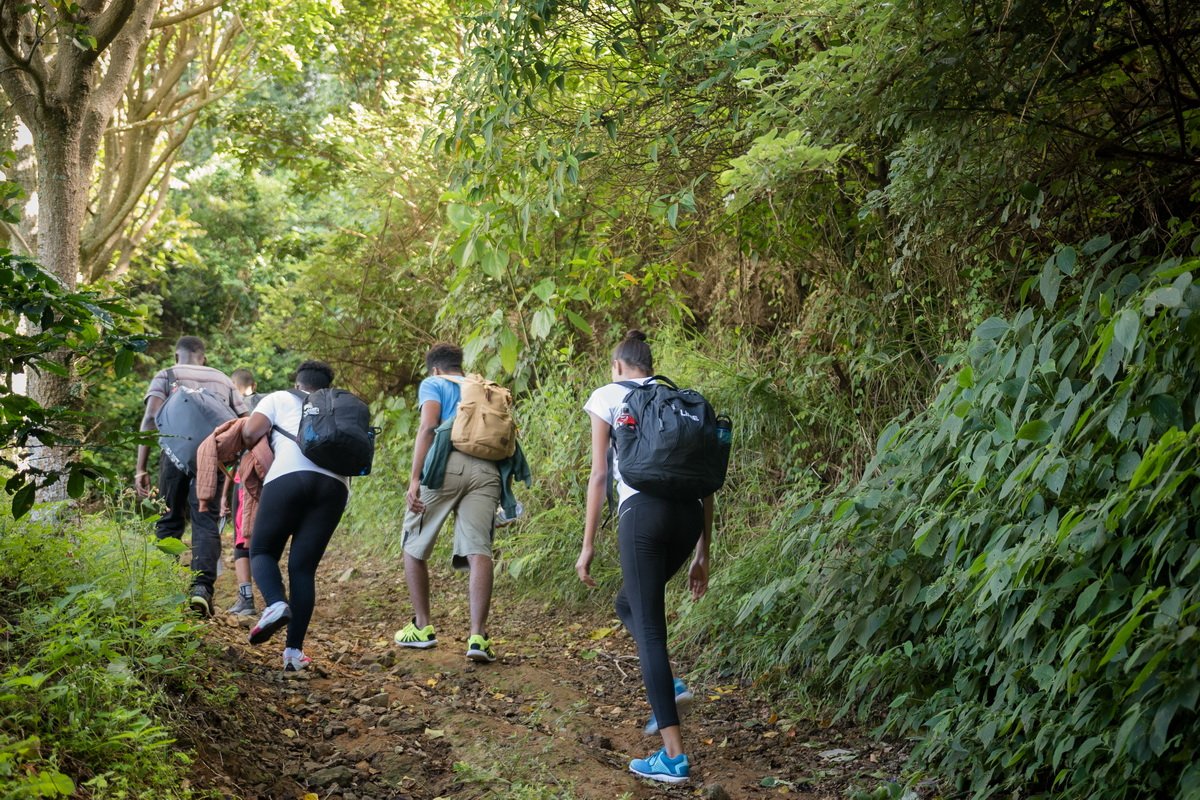
These activities make the Blue Mountains a diverse destination, offering everything from thrilling outdoor adventures to peaceful nature experiences and cultural exploration.
Here are some of the top things you can do when you visit the Blue Mountains in Jamaica:
1. Hiking to Blue Mountain Peak
One of the most popular activities in the Blue Mountains is hiking to Blue Mountain Peak, Jamaica’s highest point. The hike spans about 9.3 kilometers (5.8 miles) and takes approximately 4 to 7 hours. Many hikers start early in the morning to catch the sunrise at the summit, offering breathtaking views that stretch as far as Cuba on clear days. The hike takes you through various landscapes, including tropical rainforests and misty elfin woodlands.
2. Coffee Plantation Tours
Visitors to the Blue Mountains can tour some of the most famous Blue Mountain Coffee plantations. Coffee Plantation tours allow you to learn about the coffee production process, from growing and harvesting to roasting and tasting. This is a must-do for coffee lovers.
3. Birdwatching
The Blue Mountains are a haven for birdwatchers, with over 200 species of birds, including the endemic Doctor Bird (Jamaica’s national bird) and the rare Jamaican blackbird. The region’s dense forests provide a habitat for both resident and migratory birds, making it a prime location for spotting unique wildlife.
4. Cycling Tours
For adventure seekers, the Blue Mountains offer exciting downhill cycling tours. These tours typically start at a high elevation and allow riders to descend through scenic landscapes, passing coffee plantations, waterfalls, and tropical forests along the way. Cycling through the mountains provides both an exhilarating and scenic way to experience the area’s natural beauty.
5. Nature Walks and Picnicking at Holywell National Park
For a more relaxed experience, visit Holywell National Park, located within the Blue and John Crow Mountains National Park. The park offers well-maintained trails, picnic areas, and cabins. It’s a great spot for families or those looking for a peaceful nature walk, where you can enjoy views of the surrounding valleys and forests.
6. Visit Cinchona Botanical Gardens
Located at an altitude of 4,500 to 5,500 feet, the Cinchona Botanical Gardens is the highest botanical garden in the Caribbean. Established in 1868, it is home to a variety of exotic and native plants. Although less maintained today, the garden still offers stunning views and opportunities to see Jamaica’s rich plant life.
Blue Mountains, Jamaica Entrance Fees
When planning a visit to the Blue Mountains, it’s essential to be aware of the entrance fees, especially if you’re visiting popular trails like the Blue Mountain Peak Trail. Here’s a breakdown of the costs:
1. National Park Entry Fee
- Non-residents: $20 USD per person.
- Residents: J$200 for Jamaican adults.
2. Additional Costs
- Portland Gap Rustic Accommodation: If you’re hiking to Blue Mountain Peak, you’ll likely pass through Portland Gap, where you can rest or even stay overnight at the rustic accommodation available. There are additional fees for staying at this spot. Fees range from J$1,500 to J$3,600 per night, depending on the size of the room (for 12 or 18 people) and the type of accommodation (whether it’s a bunk room, sponge or floor space).
- Camping: For those looking to camp, there’s an additional fee of around J$200 per person per night if you have your own tent.
The fees for hiking the Blue Mountain Peak Trail and staying at Portland Gap can be paid in a few locations:
- At Portland Gap: You can pay the fees directly to the ranger or caretaker when you arrive at Portland Gap. Be sure to ask for a ticket as proof of payment.
- Jamaica Conservation and Development Trust (JCDT) Office: If you prefer to pay in advance, you can pay the fees at the JCDT office in Kingston, which manages the Blue and John Crow Mountains National Park.
Some tour operators may also include the fees in their packages, especially if you’re booking a tour through them.
Blue Mountains, Jamaica: Facts
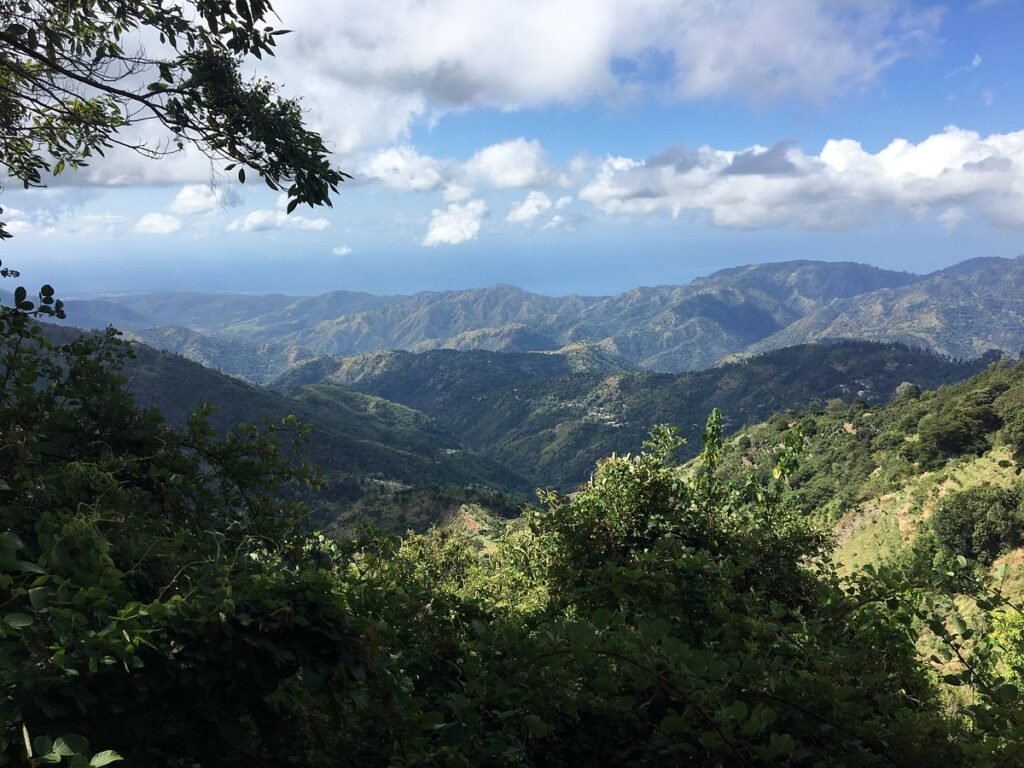
The Blue Mountains are home to Jamaica’s highest point, the Blue Mountain Peak, which stands at 7,402 feet (2,256 meters). This majestic mountain range is a natural paradise and a UNESCO World Heritage Site. The Blue Mountains are appealing to nature lovers, hikers, and coffee enthusiasts alike.
Its cool climate, mist-covered peaks, and rich biodiversity make it an essential stop for travelers seeking an adventure or a peaceful retreat into nature. The mountain is also globally renowned for its Blue Mountain Coffee, which is considered one of the best and most expensive coffees in in the world.
The Blue Mountain Peak
The Blue Mountain Peak offers breathtaking panoramic views, including a chance to see Cuba on clear days, 90 miles to the north. At 7,402 feet, it is Jamaica’s highest peak and a popular destination for hiking and birdwatching.
The best time to hike is during the dry season, from December to April, for the clearest skies.
Hiking the Blue Mountain Trail
The Blue Mountain Peak Trail is one of the most popular hiking routes in Jamaica, leading adventurers to the highest point on the island at 7,402 feet (2,256 meters). The trail is 9.3 kilometers (5.8 miles) long and takes approximately 4 to 7 hours to complete, depending on the hiker’s pace. The difficulty is considered moderate to challenging due to the steep terrain and high elevation gain. Hikers typically begin early in the morning to reach the peak in time for a spectacular sunrise.
Preparation Tips
- Fitness Level: Hikers should be in good physical condition as the trail requires endurance due to its length and elevation.
- Clothing: Wear layered clothing as the temperature drops significantly at higher altitudes. Sturdy, comfortable hiking shoes are essential for navigating the steep, rocky paths.
- Supplies: Bring sufficient water, snacks, a flashlight for early morning hikes, and a jacket for the cold. It’s also advisable to carry a raincoat, as the weather can be unpredictable.
Key Landmarks and Scenic Spots
Along the trail, hikers will pass through the Portland Gap, where they can take a rest before continuing the climb. The area is known for its dense cloud forests and elfin woodland near the summit, featuring gnarled trees and moss-covered ground. The most rewarding part of the hike is reaching the peak at dawn, where, on a clear day, you may see as far as Cuba and Jamaica’s northern and southern coasts.
Blue Mountain Coffee
Blue Mountain Coffee, grown in the high altitudes of Jamaica’s Blue Mountains, is well known for its smooth flavor, mild acidity, well-balanced flavor profile and lack of bitterness. Introduced to Jamaica in the 18th century, coffee production in the Blue Mountains flourished due to the region’s ideal climate—cool temperatures, regular rainfall, and rich, volcanic soil.
Today, Blue Mountain Coffee is considered one of the finest and most expensive coffees in the world, playing a significant role in Jamaica’s agricultural exports. It is often referred to as the “Champagne of coffees.” Blue Mountain Coffee is a luxury item that is sought after by coffee connoisseurs around the globe.
Flora and Fauna in the Blue Mountain Area
The Blue Mountains of Jamaica are a treasure trove of biodiversity, home to an array of unique plants and wildlife that thrive in its cool, misty climate. The region’s rich volcanic soil, frequent rainfall, and varied altitudes create an environment where an incredible range of flora and fauna can flourish.
Plants
The Blue Mountains are known for their lush greenery, with over 500 species of flowering plants, many of which are endemic to the area. Visitors can spot species such as the Jamaican bamboo, tree ferns, and the Blue Mahoe, Jamaica’s national tree. In addition to these, the Blue Mountains are home to over 230 species of orchids, around 60 of which are unique to Jamaica. This botanical diversity makes the Blue Mountains a paradise for plant enthusiasts and photographers.
Endemic Wildlife
Among the many species that call the Blue Mountains home, the Jamaican swallowtail butterfly (Papilio homerus) stands out. As the largest butterfly in the Western Hemisphere, it is a rare sight and a key species for conservation in Jamaica. The area is also home to more than 200 bird species, including the Jamaican Tody, the Doctor Bird (Jamaica’s national bird), and the Jamaican blackbird—all of which are endemic to the island. The Blue Mountains’ cooler, high-altitude habitats provide critical nesting and feeding grounds for these birds.
Biodiversity and Lush Greenery
The thick forests of the Blue Mountains are characterized by mosses, lichens, and ferns, creating an almost mystical ambiance, particularly at higher elevations where the trees appear gnarled and covered in mist. These forests serve as an important refuge for many species, offering a thriving ecosystem that attracts nature lovers from around the world. The Blue and John Crow Mountains National Park also supports migratory birds, making it a popular destination for birdwatchers.
The abundance of plant and animal life, along with the area’s breathtaking scenery, ensures that the Blue Mountains remain a must-visit destination for those looking to connect with nature.
What to Pack for Blue Mountains, Jamaica

When visiting the Blue Mountains for activities like hiking or exploring, it’s important to come prepared. The high-altitude environment, varying temperatures, and long hikes require specific gear to ensure a comfortable and safe experience. Here’s what you should pack:
1. Comfortable Shoes or Boots: Sturdy, comfortable walking shoes or hiking boots are essential for navigating the often uneven and rocky trails.
2. Layers of Clothing: The Blue Mountains can be quite cool, especially at higher elevations, and temperatures drop as you ascend. Pack layers to stay warm, including a light jacket or sweater.
3. Rain Gear: The region is known for unpredictable weather, so bring a waterproof jacket or poncho to stay dry.
4. Water: Staying hydrated is critical, especially during long hikes. Carry enough water for the entire trip.
5. Snacks: Bring energy-dense snacks like nuts, dried fruit, or energy bars to stay energized during your trek.
6. Headlamp/Flashlight: If you’re starting your hike early or plan to stay overnight, a flashlight or headlamp is a must, especially for navigating before sunrise.
7. Sleeping bags or blankets: If you are staying overnight.
8. Backpack: A comfortable, lightweight backpack to carry all your essentials.
9. Camera: A good camera or smartphone with a high-quality camera is essential for capturing the stunning views, wildlife, and mist-covered peaks.
10. Extra Batteries and Memory Cards: Since you’ll be away from power sources, it’s essential to bring spare batteries and memory cards for extended photography sessions.
11. Binoculars (optional): If you’re into birdwatching, binoculars are a great tool to spot some of the Blue Mountains’ many endemic bird species, like the Doctor Bird or Jamaican Tody.
12. Tripod (optional): For steady shots, especially during sunrise or in low light conditions, a compact tripod can help capture those perfect moments.
Packing these essentials will ensure a comfortable and enjoyable experience in the Blue Mountains, whether you’re hiking, birdwatching, or simply enjoying the breathtaking views.
Where to Stay in Blue Mountains, Jamaica
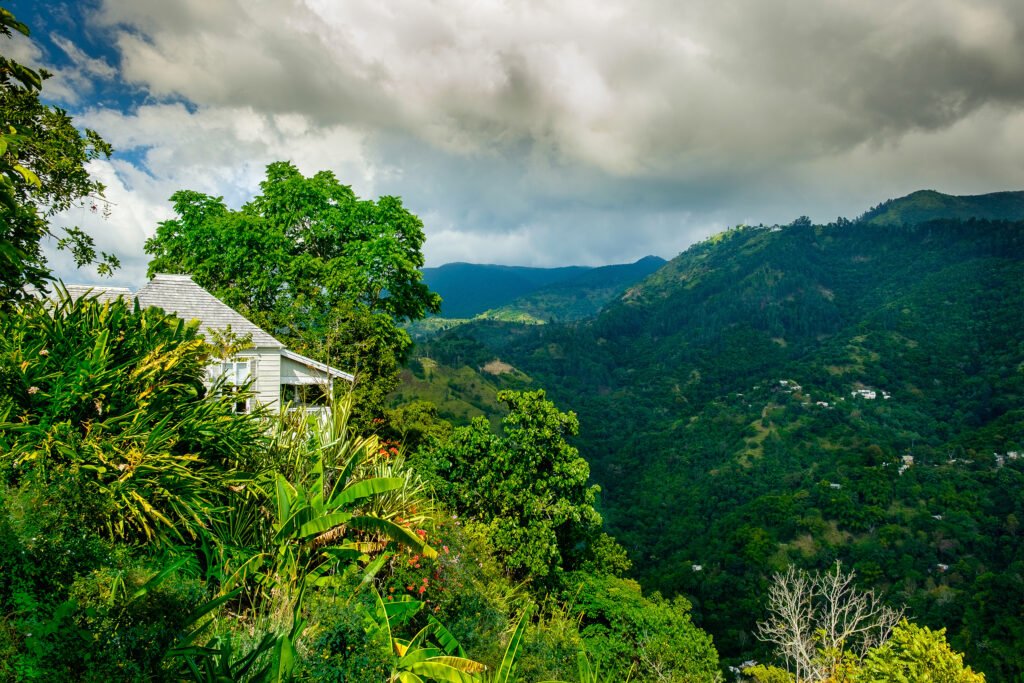
The Blue Mountains offer a variety of accommodation options, from cozy guesthouses to eco-friendly lodges, perfect for travelers seeking comfort amidst natural beauty.
Here are some options:
1. Strawberry Hill
Located in the heart of the Blue Mountains, Strawberry Hill is a luxury resort offering breathtaking views of the mountains and Kingston below. The property features Georgian-style cottages with verandas, and it’s an ideal spot for relaxation after hiking. Strawberry Hill also has an on-site spa and restaurant.
2. Prince Valley Guesthouse
Prince Valley Guesthouse is located in Irish Town, Jamaica, within the Blue Mountains. It offers a serene environment, scenic views, and access to hiking trails. The property provides a tranquil retreat for those looking to experience the natural beauty of the Blue Mountains.
3. Jay’s Guest House
Jay’s Guest House is located in Epping Farm within Jamaica’s Blue Mountains. This is a modest guesthouse that offers a local and authentic experience in the Blue Mountains. It’s popular with hikers and adventure travelers who appreciate its simple accommodations and stunning mountain views.
4. Jay’s Guest House II
Jay’s Guest House II is located in Epping Farm, within Jamaica’s Blue Mountains. This guest house offers a rustic and authentic experience in the Blue Mountains. Guests can enjoy the serene mountain environment and scenic views. It is an ideal spot for nature lovers and hikers aiming to explore the Blue Mountain Peak.
5. Forres Park Nature Retreat & Spa
A perfect blend of comfort and nature, Forres Park is nestled in a coffee plantation. This eco-friendly retreat offers guided tours, birdwatching, and relaxation in a peaceful mountain setting. The guesthouse provides an intimate experience and is a great base for exploring the nearby trails.
6. Starlight Chalet & Health Spa
This is a tranquil mountain retreat, offering cozy accommodations and a peaceful escape into nature. Starlight Chalet & Health Spa is a great place for those looking to escape the city and enjoy mountain activities. It’s ideal for visitors seeking a quiet retreat with access to hiking trails and scenic mountain views.
7. Lime Tree Farm
This is a working coffee farm that offers peaceful, eco-friendly lodging with stunning views. With a focus on sustainability, guests can also enjoy stargazing due to minimal light pollution. Lime Tree Farm is perfect for those seeking a quiet, authentic experience in the Blue Mountains.
8. Silver Hill Select
This eco-friendly retreat is nestled within Jamaica’s Blue Mountains on a working Blue Mountain Coffee farm. Silver Hill Select offers guests an immersive experience in the heart of the mountains, featuring natural pools and waterfalls just a short walk from the accommodations.
Blue Mountains, Jamaica: FAQs

These FAQs and answers will help you plan your visit to Blue Mountain in Jamaica:
1. What is the best time to hike Blue Mountain Peak?
The best time to hike Blue Mountain Peak is during the dry season, which runs from December to April. This period offers clearer skies and more comfortable hiking conditions. Many hikers start the trek around 2:00 a.m. to catch the sunrise from the summit..
2. Do I need a guide to hike Blue Mountain Peak?
While it’s not mandatory to hire a guide, it’s highly recommended, especially for first-time visitors. A guide can help you navigate the trail and share interesting insights about the flora, fauna, and history of the area.
3. What should I bring for my hike?
Essential items include sturdy walking or hiking boots, layers of clothing (as temperatures drop near the summit), rain gear, water, snacks, and a flashlight for early morning hikes. If you plan to stay overnight, don’t forget a sleeping bag or warm blankets.
4. Are there places to stay in the Blue Mountains?
Yes, you can choose from a variety of accommodations, ranging from eco-lodges to guesthouses. Popular places include Strawberry Hill, Prince Valley Guesthouse, Forres Park Nature Retreat & Spa, Jay’s Guest House, Jay’s Guest House II, Starlight Chalet & Health Spa, Lime Tree Farm, Silver Hill Select
5. What is the weather like in the Blue Mountains?
The average temperatures in the Blue Mountains vary depending on the elevation, with higher areas being significantly cooler. At Blue Mountain Peak (the highest point), temperatures typically range from around 10°C to 16°C (50°F to 60°F) throughout the year. The Blue Mountains generally have a cooler climate than the rest of Jamaica, with frequent rain due to the higher elevation. The summit can get quite chilly, especially at night, so it’s essential to dress in layers.
Is Blue Mountains, Jamaica Worth Visiting?
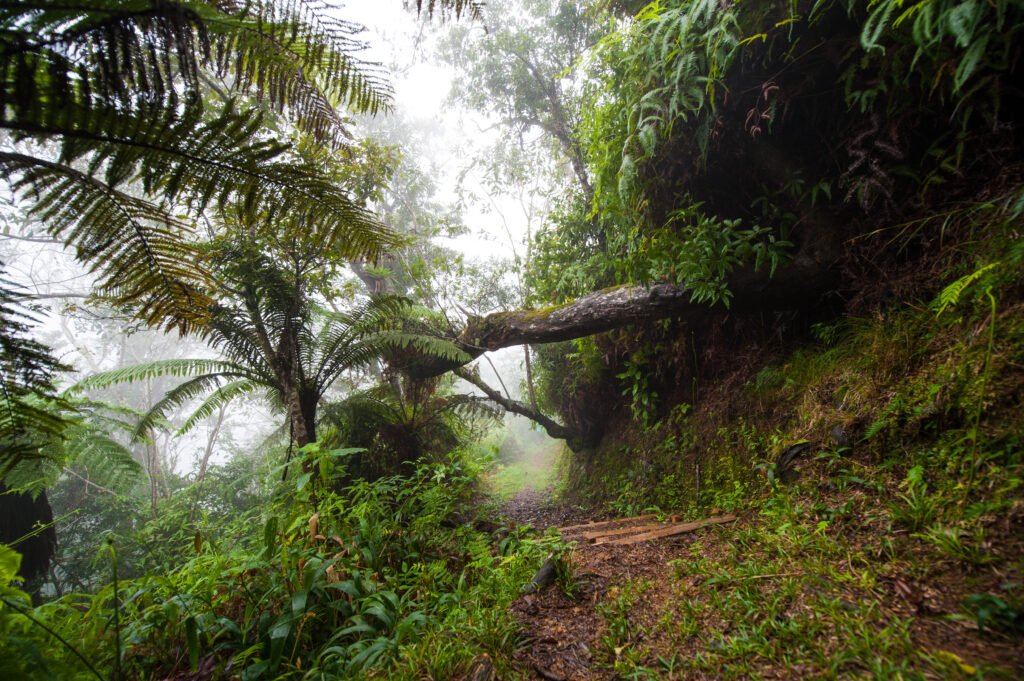
Absolutely yes!
The Blue Mountains are absolutely worth visiting for its breathtaking natural beauty and rich biodiversity. This iconic destination in Jamaica offers visitors the chance to hike to the island’s highest peak, where you can witness stunning views that stretch as far as Cuba on clear days.
For nature lovers, the Blue Mountains are a paradise. The mist-covered peaks and lush greenery create a peaceful atmosphere, and the area is home to a variety of wildlife. The hiking trails, especially the trek to Blue Mountain Peak, offer breathtaking panoramic views that truly breathtaking.
If you’re a coffee enthusiast, the Blue Mountains are world-renowned for producing Blue Mountain Coffee which is considered one of the finest and most expensive coffees in the world. You can visit local coffee farms, take tours, and learn about its rich history.
Whether you’re looking to hike, explore local culture, or simply relax in an eco-friendly lodge, the Blue Mountains offer an unparalleled experience that is absolutely worth the visit!
Blue Mountains, Jamaica: Final Thoughts

The Blue Mountains in Jamaica offer an exciting blend of adventure, tranquility, and cultural richness.
Whether you’re hiking to the peak for stunning views or simply soaking in the serene surroundings, it’s a destination that leaves a lasting impression.
With mist-covered peaks, cool mountain air, and rich biodiversity, the Blue Mountains provide a peaceful escape from the hustle and bustle.
It’s a place where nature, culture, and adventure come together, making it a must-visit for any traveler to Jamaica.
Simple yet extraordinary, a visit to the Blue Mountains is an experience you won’t forget!

